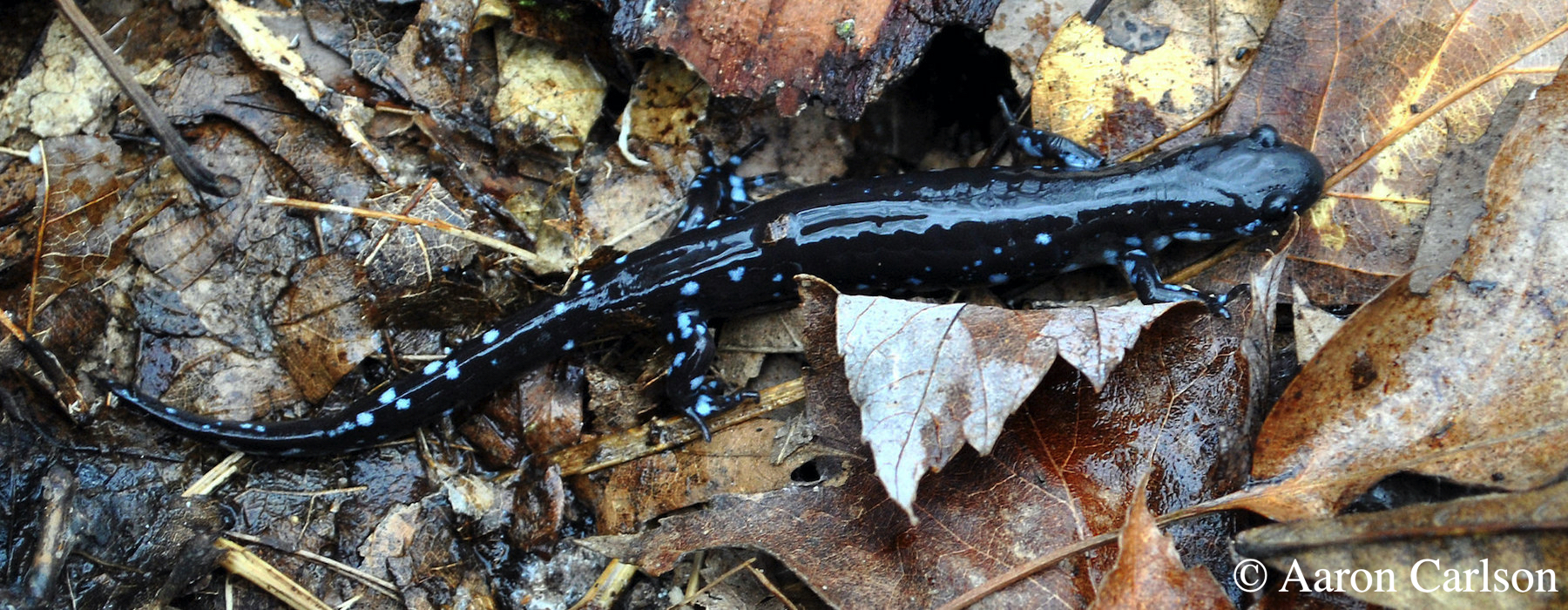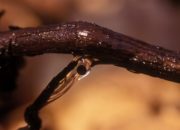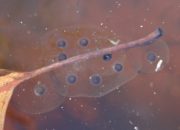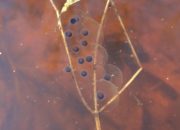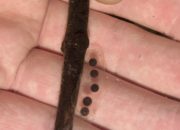The Blue-spotted Salamander is the smallest of the three mole salamanders found in Vermont -- Blue-spotted, Jefferson, and Spotted. With a slender body measuring up to five inches long, the Blue-spotted Salamander sports a grayish-black coloring with blue-white flecks or splotches on its sides and belly.
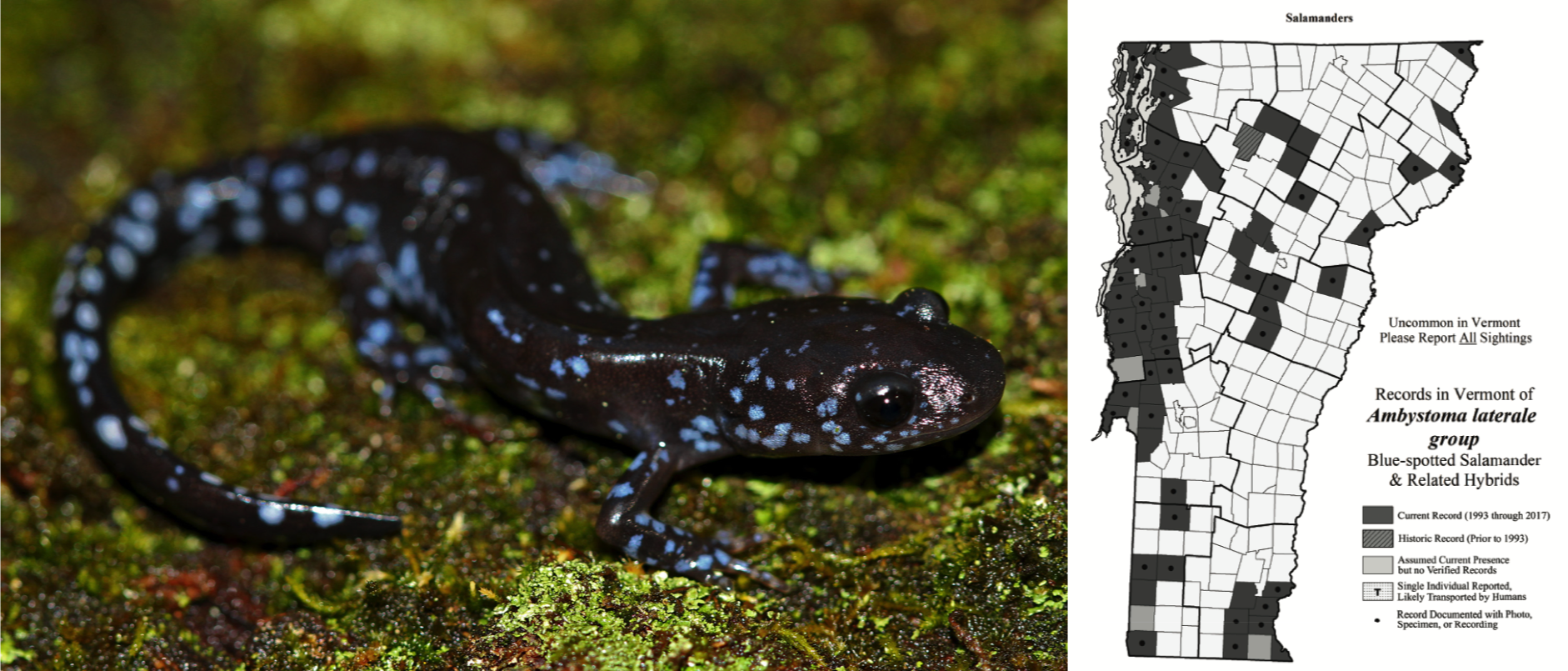
(Left) Blue-spotted Salamander © Peter Paplanus. (Right) Blue-spotted Salamander distribution © VT Herp Atlas.
Blue-spotted Salamanders typically emerge from underground hibernacula on rainy nights from late March to early April, when they migrate to vernal pools and shallow swamps to begin their elaborate and energetic underwater mating dance. Male salamanders drop spermatophores (packets of sperm) into the water, at which point the female picks them up with her cloaca, fertilizing her eggs internally.
Egg Mass Identification
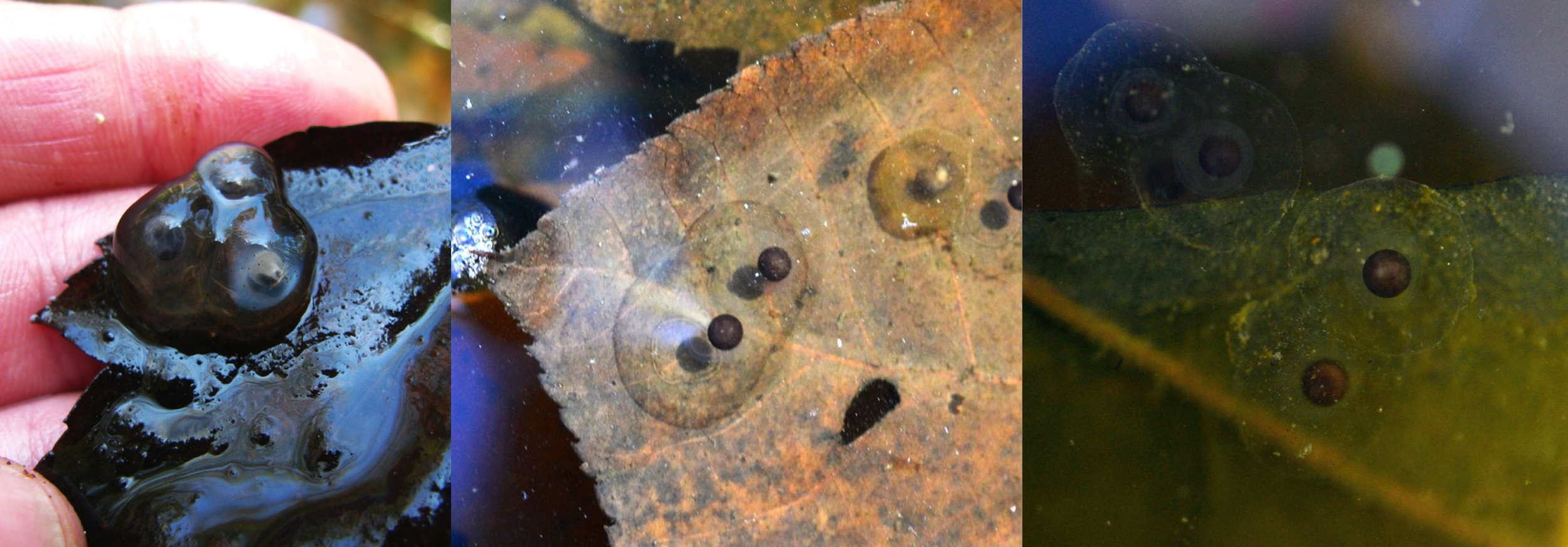
Blue-spotted Salamander Egg Masses © (left-to-right) Steve Faccio, Tristan Schramer, Tristan Schramer (used with permission)
What: They can be very difficult to see. Laid small, “drippy” masses of 2-5 eggs. As with the physical characteristics of the hybrid salamanders, their egg masses may also vary in appearance, depending on the proportion of Jefferson vs. Blue-spotted genes present.
Blue-spotted Salamanders historically hybridized with Jefferson salamanders, creating all-female populations of unisexual hybrids (read more about unisexual hybrids on our Jefferson Salamander page). Typically, hybrid females will lay small egg masses containing two or three embryos, while pure Blue-spotted Salamanders will lay single eggs. Depending on water temperatures, eggs hatch in one or two months.
Where: Typically lay eggs singly in loose sheets on the pool bottom, occasionally attached to sticks.
In New England, Blue-spotted are found in upland forests and breed in lowland swamps, marshes, and vernal pools. As with all adult mole salamanders, Blue-spotteds spend much of their time underground, preferring moist sandy or loamy soils. In Vermont, Blue-spotteds are primarily relegated to the Champlain Valley, but are also found in other scattered lowlands.
Vermont Observations
Photo Gallery
